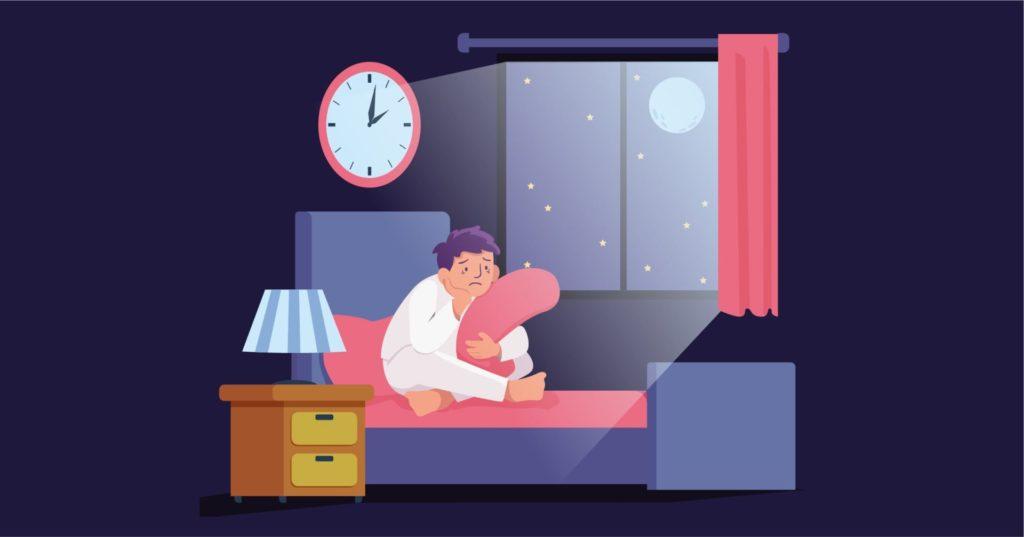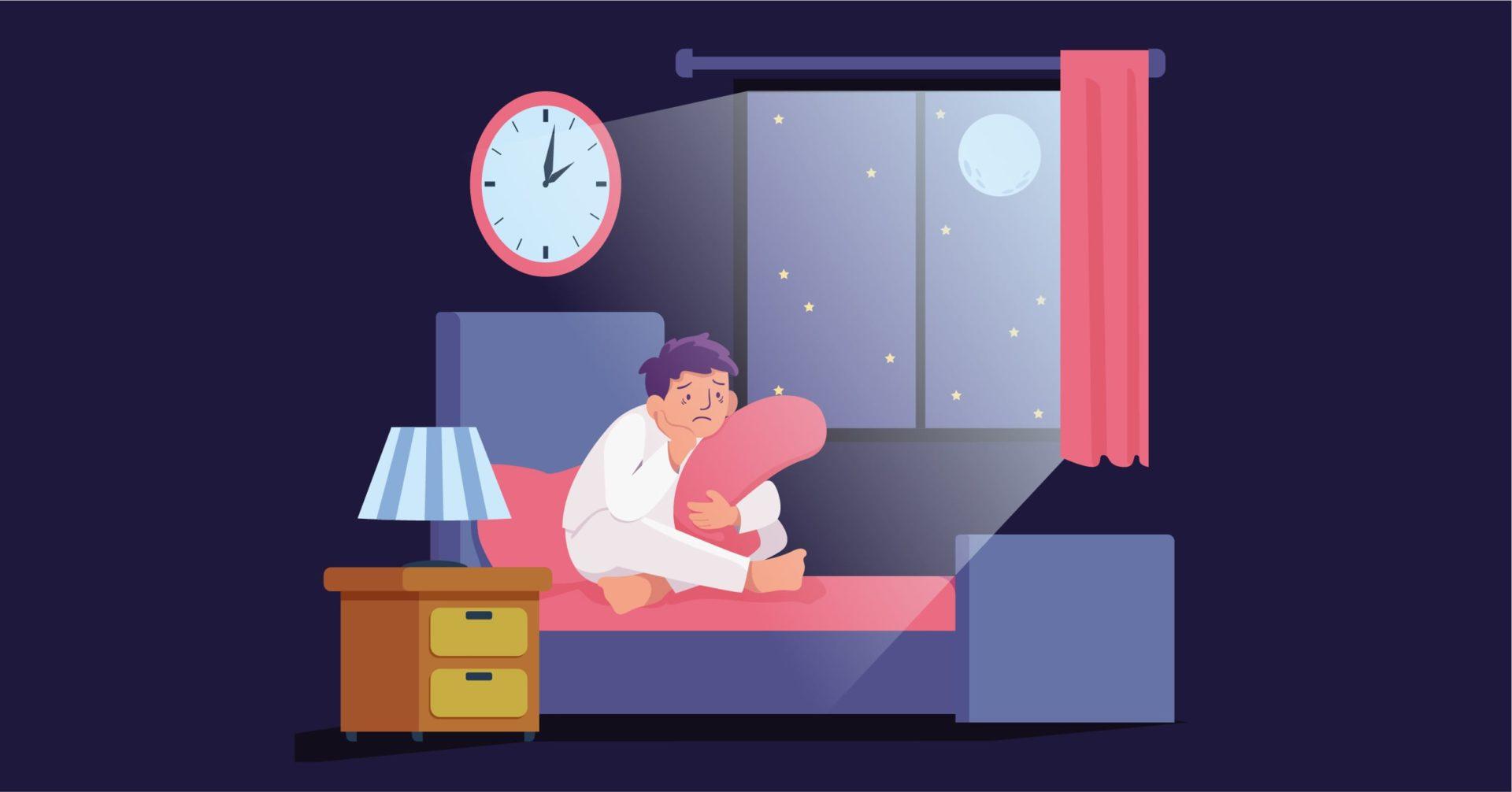Overview
Rapid Eye Movement (REM) Sleep Behavior Disorder is a parasomnia that presents vocalization and complex motor behaviors during REM sleep. Usually in REM sleep, we lose our muscle strength, and with it, the ability to move.
This is known as atonia. There is usually an abnormal absence of atonia (which leads to body movements such as kicking or thrashing) and polysomnographic recording (a diagnostic tool involving monitoring of various factors such as oxygen level and heart rate during sleep states) observed.
The behaviors manifested by the disorder, which are often attributed to being dream enactments, have the potential to be harmful, and cause injury to the patient and/or their bed partner. There is complete awareness in individuals when they wake up, and details about the dream can be remembered.
The cause for REM Sleep Behavior Disorder is uncertain, and is sometimes attributed to an underlying neurodegenerative disorder such as Parkinson’s or dementia. In idiopathic cases, the diagnosis of the disorder is often considered to be a precursor to the onset of a neurodegenerative disease.
Abnormalities in the brainstem in regions controlling REM sleep before neuron degeneration are considered probable factors, too.
The disorder has also been associated with the use of antidepressants and antipsychotics, narcolepsy, and environmental risk factors that include exposures experienced by those with occupations involving farming and coal mining. Head injury has also been investigated as a potential correlate.
Signs and Symptoms
The signs of REM Sleep Behavior Disorder are easily identifiable. The most common symptoms experienced by individuals include:
- Absence of atonia (loss of muscle strength) during sleep
- Dramatic or violent physical behaviors during sleep
- Speaking, screaming, or other vocalizations during sleep
- Vivid dreams or nightmares
- Ability to recall all the details of the dream/nightmare upon awakening, and often for long durations spanning weeks, months or years
- The actions or vocalizations are mostly consistent with the content of the dream
These symptoms are experienced during Rapid Eye Movement sleep, signifying that they occur 90 or more minutes after the onset of sleep. They are more frequently noticed during the latter part of the period of sleep and do not typically occur during daytime naps.
Risk Factors
While a majority of the literature on the prevalence of REM Sleep Behavior Disorder suggests a male preponderance, one population-based study reported no sex-based preponderance. Higher age has also been observed in various epidemiological studies, with most patients falling in middle-aged categories.
Lower education has also been reported as a characteristic of participants across studies. Those who develop REM Sleep Behavior Disorder before the age of 40 usually have narcolepsy, although cases where early onset is observed may suggest the development of a neurodegenerative disorder later in life.
While approximately 60% of REM Sleep Behavior Disorder cases are reportedly idiopathic, remaining cases are often associated with Parkinson’s, dementia, multiple system atrophy, and more.
Studies suggest that approximately 50% of patients with spontaneous REM Sleep Behavior Disorder develop parkinsonian disorder within a decade, and nearly 81-90% of patients develop a neurodegenerative disorder.
There is also some evidence that REM Sleep Behavior Disorder might have similar risk factors to neurodegenerative diseases. Other correlates of the disorder include use of antidepressant and antipsychotic drugs.
Studies have also exposed an occupational link between REM Sleep Behavior Disorder and farming and coal mining, with the former being associated with pesticide exposure as another potential risk factor.
Diagnosis
The focus of diagnosis of REM Sleep Behavior Disorder is abnormal motor activity and vocalization during REM sleep, polysomnographic abnormality and an absence of atonia.
The diagnostic criteria outlined in the DSM-5 include:
- Repeated episodes of arousal associated with complex motor behavior or vocalization
- Occurrence of behaviors during REM sleep
- Complete awareness upon awakening following the episodes
- Either one of the following:
- REM sleep without atonia or polysomnographic recording
- History of REM Sleep Behavior Disorder or synucleinopathy diagnosis
The behaviors are considered to be the cause of significant distress or impairment in areas of functionality, and are not attributable to substance abuse, medication, or medical conditions.
A multitude of validated diagnostic measures are available for REM Sleep Behavior Disorder in the case of the unavailability of polysomnography or when REM sleep is not captured in polysomnographic recordings. These include:
- The REM Sleep Behavior Screening Questionnaire
- The Innsbruck REM Sleep Behavior Disorder Inventory
- The RBD-HK
- The Mayo Sleep Questionnaire (MSQ)
Each of these tests has different validity, depending on the target population. Hence, clinicians use them based on various factors.
When there is no clear underlying pathology (such as narcolepsy or Parkinson’s), idiopathic REM Sleep Behavior Disorder is diagnosed, though even in such cases it is considered to be a precursor associated with Parkinson’s or other synucleinopathies.
Differential diagnoses include NREM parasomnias such as sleep walking, night terrors and confusional arousals, nocturnal panic attacks, nocturnal seizures, nightmares, nocturnal wandering associated with dementia, and obstructive sleep apnea. Case history plays a crucial role in determining differential diagnoses.
Treatment
The pharmacological treatment for REM Sleep Behavior Disorder involves the use of clonazepam, a long acting benzodiazepine.
Immediate relapse is observed on termination of clonazepam doses. Follow-ups for as long as 6 years can be required. Cautious use of clonazepam is recommended for patients with dementia, gait disorders, and comorbid sleep apnea.
Its use may need to be monitored considering REM Sleep Behavior Disorder may be a precursor to dementia.
While there is evidence of the efficacy of melatonin in treating REM Sleep Behavior Disorder, it is less strong than that for clonazepam, but stronger than that of other pharmacological agents. 3-12mg dosages at bedtime have proven effective.
In context to injuries to bed partners, patients also benefit from taking preventative measures against injury in addition to pharmacological modes of treatment. This can include fashioning barricades out of pillows, sleeping on mattresses on the floor, removing objects and furniture that could potentially cause harm from the sleeping environment, and potentially using restraints.
Differential Diagnosis
1. Other parasomnias: Confusional arousals, sleepwalking, and sleep terrors can easily be confused with REM sleep behavior disorder. In general, these disorders occur in younger individuals. Unlike REM sleep behavior disorder, they arise from deep NREM sleep and therefore tend to occur in the early portion of the sleep period.
2. Nocturnal seizures: Nocturnal seizures may perfectly mimic REM sleep behavior disorder, but the behaviors are generally more stereotyped.
3. Obstructive sleep apnea: Obstructive sleep apnea may result in behaviors indistinguishable from REM sleep behavior disorder. In this case, the symptoms resolve following effective treatment of the obstructive sleep apnea.
4. Other specified dissociative disorder: Unlike virtually all other parasomnias, which arise precipitously from NREM or REM sleep, psychogenic dissociative behaviors arise from a period of well-defined wakefulness during the sleep period.
5. Malingering: Many cases of malingering in which the individual reports problematic sleep movements perfectly mimic the clinical features of REM sleep behavior disorder.
Comorbidity
REM sleep behavior disorder is comorbid with narcolepsy, Parkinson’s disease, multiple system atrophy, or major or mild neurocognitive disorder with Lewy bodies.
Specialists
Primary healthcare providers or neurologists are likely to recommend cases to sleep specialists. The diagnosis of REM Sleep Behavior Disorder requires the expertise of sleep technicians in order to record and interpret polysomnographic evidence.
Laboratory tests will likely be carried out in order to rule out the presence of neurological conditions or neurodegenerative disorders.
Upon diagnosis, it is important to follow up regularly with regards to medication dosages and symptom management. Since REM Sleep Behavior Disorder diagnoses act as precursors to neurodegenerative disorders, close monitoring is necessary in the years following the diagnosis.
In Conclusion
There may also be a number of particular environmental or individual risk factors for REM sleep behavior disorder, such as farming, working with pesticides, smoking, or having suffered a head injury in the past.
REM sleep behavior issues can lead to complications such as hurting yourself or your sleeping spouse, upsetting your sleeping partner or other household members, and isolating yourself from social situations out of concern that others would find out about your sleep disturbance. Thus, it is important to start counseling at an early stage.
Book a session with us today.





